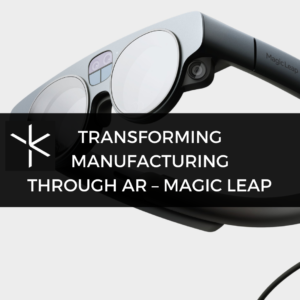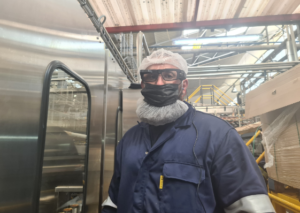Planned Predictive Maintenance Why Manufacturing Companies Must Go Beyond Scheduled Preventive Maintenance by Atheer

Unplanned equipment downtime continues to cost manufacturing companies $50 billion each year, with aging equipment being the leading cause of extended downtimes. Manufacturers are increasingly looking to move to planned predictive maintenance to reduce downtimes and increase the longevity of equipment.
To improve equipment uptime and increase their operational life, manufacturers have transitioned from reactive maintenance that is largely inefficient to preventive maintenance, which is based on proactively servicing equipment to increase machine longevity. In Industry 4.0, preventive or planned maintenance continues to be the dominant approach favored by nearly 80% of maintenance personnel.
Having said that, this preventive maintenance strategy is not optimized to manage the complexities of Industry 4.0. For the most part preventive maintenance works around ‘fixed’ schedules or as a response to failure events. In this article we will explore why manufacturing companies need to go beyond scheduled preventive maintenance and how a Connected Worker Platform can help them take the next step into data driven planned predictive maintenance.
What is Predictive Maintenance?
In today’s manufacturing, companies are focusing on improving their Overall Equipment Effectiveness or OEE score to increase machine uptime and productivity. For an optimized OEE score, manufacturers need to focus their maintenance-related activities around factual real-time data about manufacturing assets instead of measuring them against hypothetical end-of-life parameters.
Predictive maintenance is about scheduling maintenance-related activities around accurate data-based predictions about the asset’s life. Planned predictive maintenance is facilitated by large volumes of asset data collected from equipment sensors, smart machines, augmented service tasks and robots. According to McKinsey, predictive maintenance reduces machine downtime by 30-50% and improves machine life by 20-40%.
Predictive Maintenance benefits Manufacturing companies by enabling:
- Real-time visibility into the current machine conditions, thus accurately predicting and preventing possible downtime.
- Effective cost savings by minimizing any planned machine downtime and maximizing equipment lifetime.
- Improved planning of maintenance activities by integrating the asset condition with the production schedules and demand forecasts.
- Improved productivity for the maintenance team personnel and enabling asset managers to improve OEE scores.
Next, let us see how a Connected Worker platform can help in elevating predictive maintenance in the manufacturing domain.
How Connected Workforce Platforms Improve Predictive Maintenance?
Through data-driven predictive maintenance, valuable insights about asset conditions can now be extracted that can facilitate the remote maintenance process. With the use of Augmented Reality (AR) technology in the Front Line Worker platform, remote technicians are better positioned to conduct asset repairs including complex machine parts. AR technology eliminates travel-related costs for support engineers by providing remote assistance and gets expertise where you need it.
Further, real-time data visibility can be used to streamline preventive maintenance operations in manufacturing facilities and allow the allocation of necessary resources to assets that need immediate attention. Front Line Worker platforms and technologies also elevate the quality of inspections performed by technicians. Step-by-step visual work instructions available on Front Line platforms also enhance machine inspections and audits in any manufacturing facility.
Conclusion
According to ABI Research, predictive maintenance is expected to have an installed base of over 9.8 million devices in the next five years.
Low code/no code Connected Worker platforms boost predictive maintenance operations by providing real-time machine information in a convenient digital format that allows companies to iterate and improve their processes to achieve peak efficiency. This reduces machine downtime and improves OEE in the age of Industry 4.0.
With its Connected Workforce platform, Atheer has been providing innovative AR-enabled solutions that overcome many industry pain points including machine maintenance work for some of the largest companies in the world. The Atheer platform is here to empower maintenance engineers with resources including AR-based remote assistance, work instructions, and digital workflows to make sure they can do their best work every time. It’s time to free your teams from wasting thousands of hours per year per asset in dual data entry, eliminate inefficient processes and streamline operations with end-to-end support.









